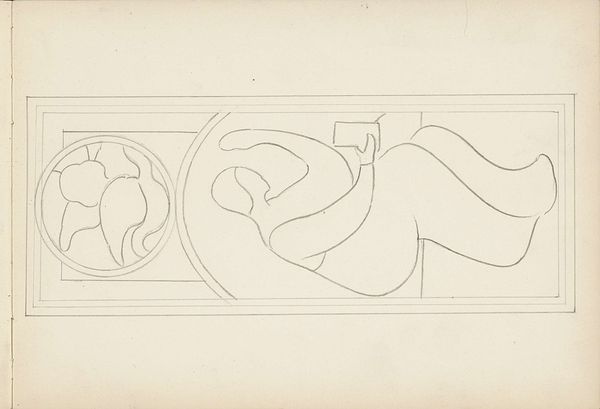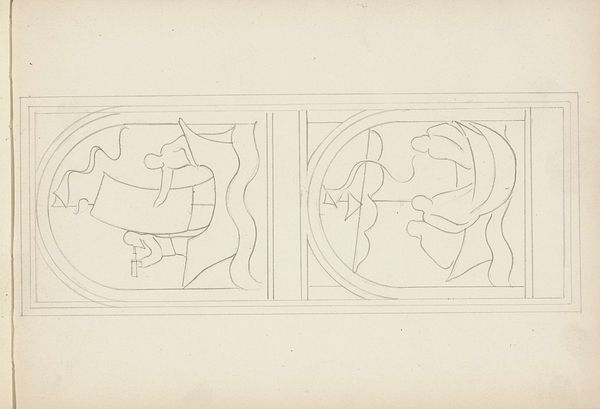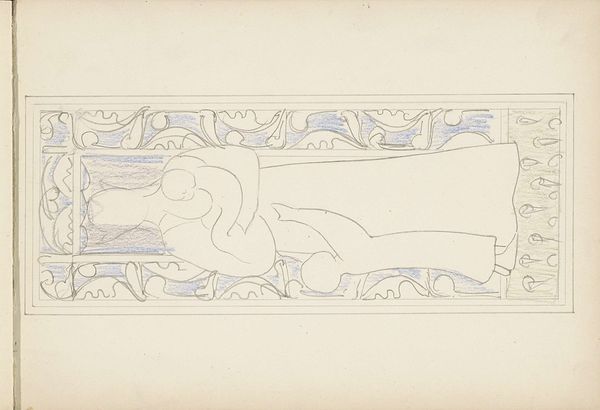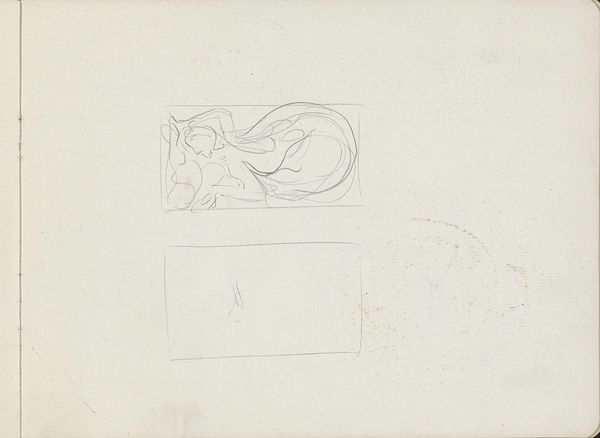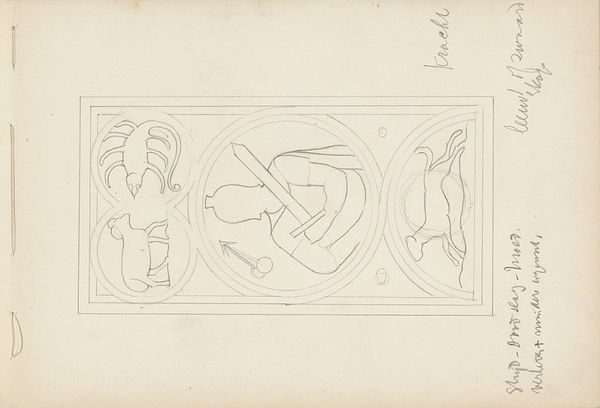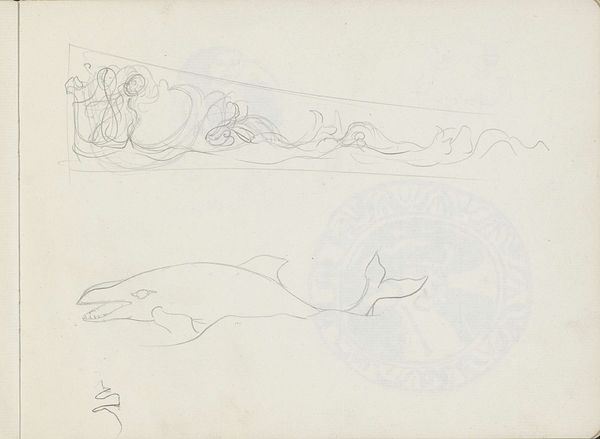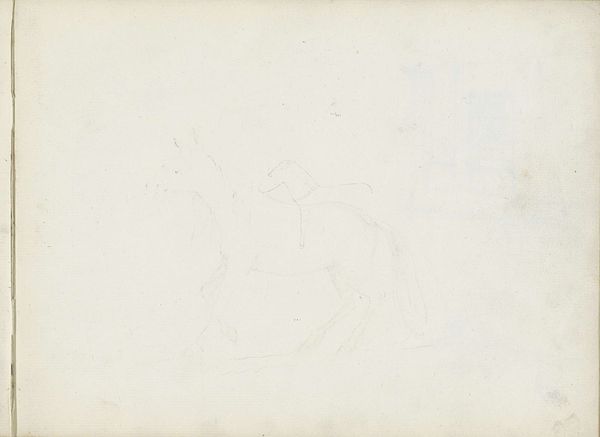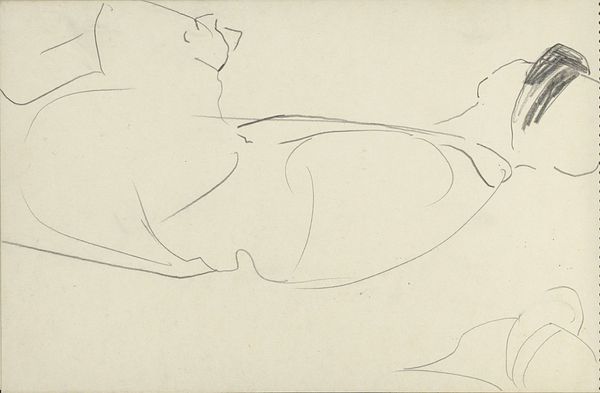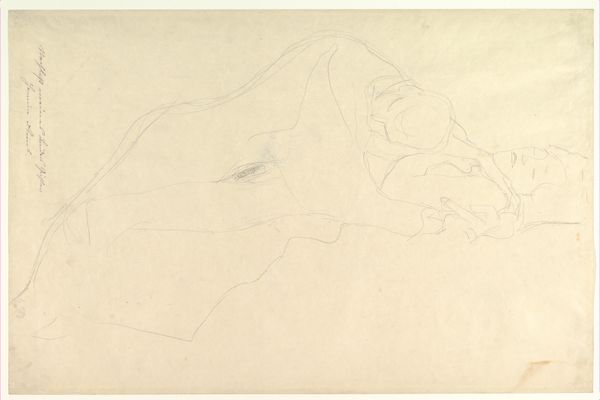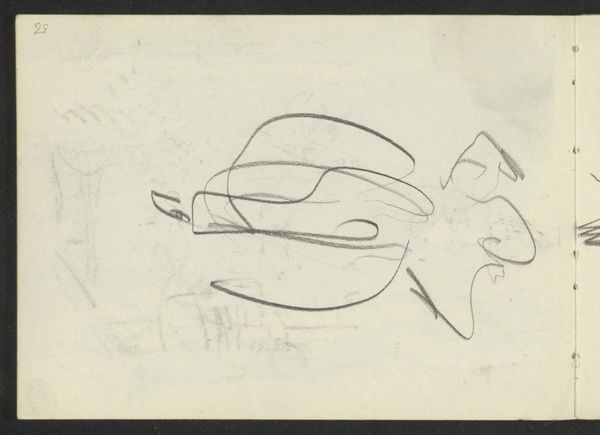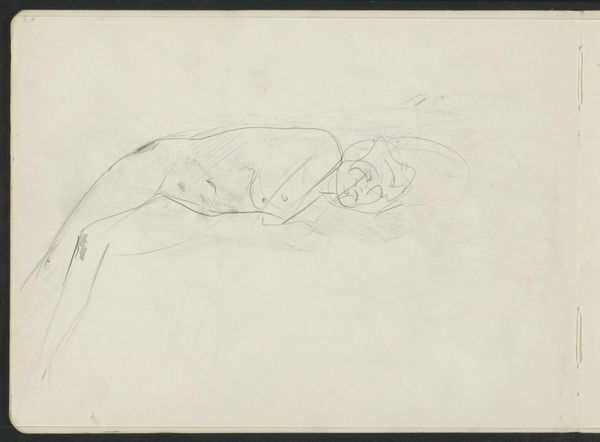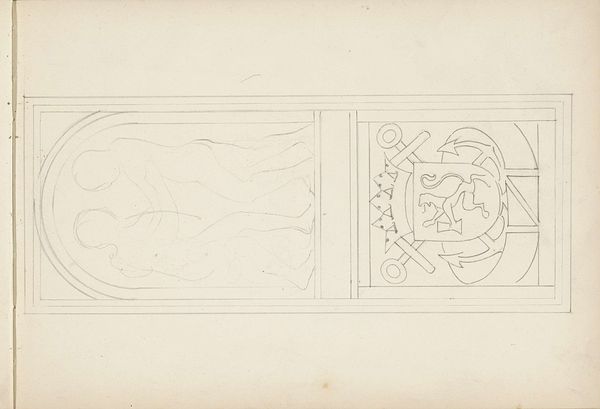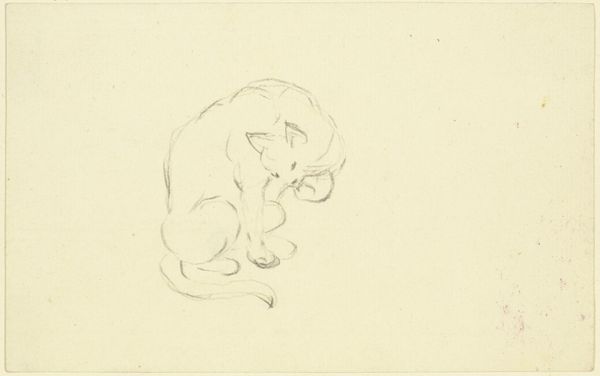
drawing, paper, pencil
#
drawing
#
art-nouveau
#
figuration
#
paper
#
pencil
#
line
Copyright: Rijks Museum: Open Domain
Editor: This is "Ontwerp voor een venster met een zittende figuur met schaal," a pencil and paper drawing made between 1900 and 1903 by Antoon Derkinderen. It's clearly a study for a stained glass window, and I’m immediately struck by the simplified lines and the almost classical, contemplative mood it evokes. How do you interpret this work? Curator: This drawing offers a fascinating glimpse into the social and political currents swirling around the fin de siècle. The stylized, almost ethereal, depiction of the figure, combined with the scales, points towards deeper questions about justice and equilibrium, themes highly relevant within the context of early social reform movements. Editor: Justice and equilibrium... I hadn’t thought of it that way. I was focused more on the art nouveau style, but I see what you mean about justice now that you mention it. The figure looks almost like she is weighing ideas. Curator: Exactly! Consider the symbolism within the context of growing labor movements and women's suffrage. Derkinderen might be using classical allegories to comment on contemporary power structures and the need for societal rebalancing. What does the “window” represent in that frame? What does it mean to look "through?" Editor: So, by representing justice as a figure within a window, the artist might be suggesting that justice itself needs to be brought to light, made more transparent, or perhaps be more accessible to all. I didn't realize art nouveau could be so engaged. Curator: Art Nouveau, often dismissed as merely decorative, can be incredibly insightful when viewed through a critical lens. It was, after all, a style embraced by many who sought to break from academic traditions and express a more modern sensibility, including concerns about social progress. I wonder about this piece being for a stained-glass window. Who was meant to see it and what statement would that placement make? Editor: That’s a great point! Thinking about the original location adds a whole other layer to the meaning. I'll definitely look at Art Nouveau differently now. Thank you. Curator: Likewise, your observation about the contemplative mood made me see that side even more. It's a dialogue, always, with the artwork and each other.
Comments
No comments
Be the first to comment and join the conversation on the ultimate creative platform.
